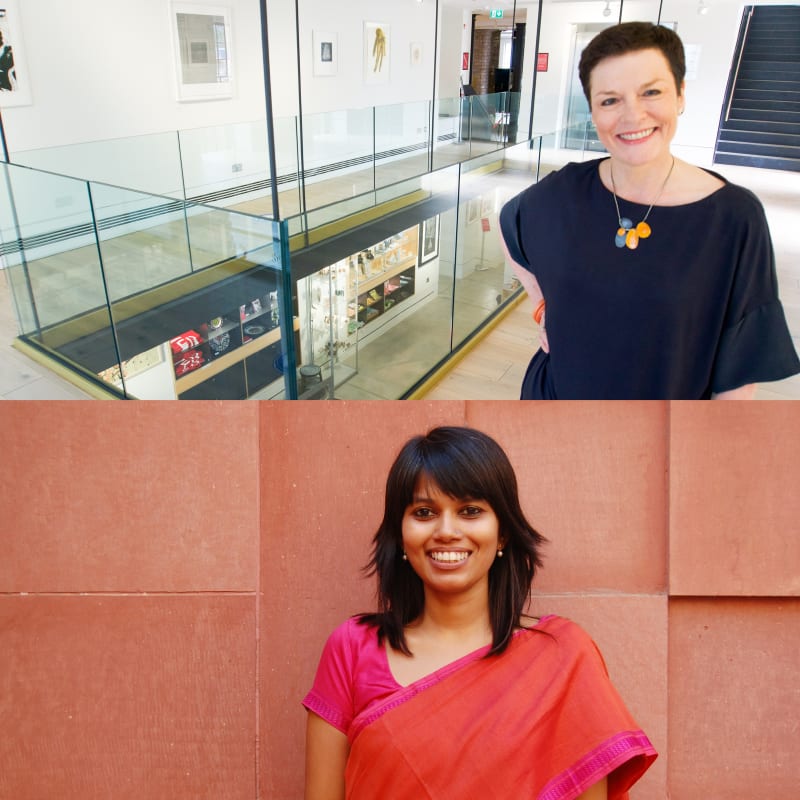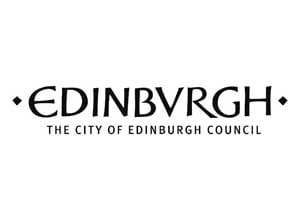It feels like the world has tilted on its axis several times over the past few years. We are grappling with environmental crisis, social division, a global pandemic and war, most recently in Ukraine, causing heart breaking humanitarian crisis impacting millions. It’s an important moment for a global conversation about what matters. And I believe, as someone from a generation which hasn’t always got things right, it’s a time we must listen to the voices of young people and what matters to them.
Future Flow is a learning project for young Curators from India and Scotland, culminating in an exhibition initially presented in Ahmedabad and Delhi, and later we hope in Edinburgh. It’s led by Edinburgh Printmakers and Flow India and we’re delighted to also be working in partnership with the National Institute of Design in India and the University of Edinburgh/Edinburgh College of Art, Edinburgh Napier University and Queen Margaret University, Edinburgh in Scotland. The project has been made possible with support from the British Council.
I was introduced to Flow India’s Director Arundhati Mitter by Mungo Campbell, Edinburgh Printmaker’s Chair. Arundhati and I quickly recognised we hold many shared values, rooted in wanting to invest in future generations through education and investigative learning. Like me, Arundhati strongly believes engagement with culture fuels human ingenuity and builds self-awareness. Using Edinburgh Printmakers building history as a starting point we worked up a project idea as an opportunity to retrace Scotland and India’s past industrial relationship and re-present it in the form of a future facing print exhibition commissioned and produced by next generation visual arts curators able to see things in new ways.
Once we’d conceived the project, we worked quickly to bring two more members into the Future Flow team, Vicki Hesketh as Project Coordinator and Shailja Khati, Learning Experience Designer to help set the project up. We then worked to build institutional partnerships into the project.
Future Flow will work towards a group print exhibition in Ahmedabad and New Delhi in spring 2023, commissioned to generate space to reflect on history, both representing and speaking to audiences in India, and Scotland and the wider UK. It will draw on India and Scotland’s track records in the field of printmaking, as well as we hope, innovate within the form. The medium of expression for our project will focus on printmaking but the interpretation might use language, video, photography, and other visual means of expression.
I’ve been researching the history of fine art printmaking which emerged in India in the early 20th Century. Block printed textiles has a much longer history. There is evidence that the use of the concept of mass duplication dates to the time of the Indus Valley civilisation at around 3500 to 1300 BC which presents a compelling story. The practice of printmaking as a fine art medium gained popularity in the early 20th century when printing presses were increasingly available. India today has many organisations devoted to printmaking including the Indian Printmakers Guild, Chhaap, the Garhi and Lalit Kala studios in New Delhi; the Rashtriya Lalit Kala Studio in Lucknow; Bharat Bhavan in Bhopal; the Print Studio and Academy of Fine Arts in Mumbai; and the Kanoria Centre for Arts in Ahmedabad, among others.[1]
Printmaking in Scotland featured a very interdisciplinary nature of print production from medical books; map making to music publishing; travel writing and antiquarianism to textile and ceramic decoration from the 18th Century. Fine art printmaking was a central part of this mix. It has been a cornerstone of the visual arts in Scotland since the founding of the open access studios. Edinburgh Printmakers was established in 1967 as the first open access studio in the UK. We are part of a network of print studios in Scotland including Glasgow Print Studio, Dundee Contemporary Arts (DCA) and Peacock Visual Arts in Aberdeen as well as a wider network of 11 visual arts production facilities across Scotland - Scotland’s Workshops.
My personal mission has always been to create opportunities for artists to make work, helping them to express their voices authentically within their chosen artform. I’ve worked in dance, theatre, and the visual arts as a curator and producer, administrator and funder, educator, and artist. I strongly believe in the power of the arts to offer meaning to our lives through finding touchpoints that connect and move us. I’m also interested in how the arts are an inter-disciplinary part of mainstream culture. The collaborative nature of printmaking makes it a natural home for the experimentation and innovation valued across design and advertising, as well as within the fine arts.
At Edinburgh Printmakers we are committed to working internationally. Future Flow runs in parallel with another international project ‘In from the Margins’ funded by Creative Europe which will see 30 artists from refugee or migrant backgrounds being offered residencies in 5 print studios across Europe. We’ve selected artists from West Sudan, Syria, Pakistan, Iraq, Iran, Croatia, Kosovo, Bosnia and Herzegovina and Uruguay. Future Flow will build on this to support artists from India and Scotland to deepen and develop their practice in the context of a changing world.
Much has been written about gatekeepers working in the arts. Power is a complex reality, which both attracts and creates barriers for people wanting to work in the industry. This exciting project for young Curators will open the door to a new set of decision makers, working with support from a group of institutions dedicated to enable the best learning experience we can generate. This project is important to me, on a professional level because it’s nurturing young curators to make good commissioning decisions and provide work for artists, and a personal level because of my family connections to India.
In today’s times international connections feel even more important than ever - I’m looking forward to working with everyone involved in helping make Future Flow happen.
Janet Archer,
Chief Executive, Edinburgh Printmakers
How the allure of cultural and historical narratives draws in me time and again
An uneventful October week brought in an unexpected email from an old friend. More than 4 years ago, I met Mungo Campell, the Deputy Director of the Glasgow Museum at a symposium hosted by the Kolkata Museum of Modern Art.
Needless to mention, we immediately found alignment in our interests and ideas and parted with the promise of finding opportunities to collaborate in some way in the future.
Who would have thought that in aftermath of the pandemic, he would not only reconnect but also open new doors to find other kindred spirits in the world of all things culture, eagerly waiting to explore new linkages across geographies!
The person I was introduced to was Janet Archer, the CEO of Edinburgh Printmakers, a visual arts centre in Fountainbridge and also home to one of the largest printmaking studios in Europe. Edinburgh Printmakers (EP) was looking for partners in India to develop community-based creative projects centred around printmaking in its broadest forms. Janet's own personal connection with the Indian sub-continent added another layer of intrigue.
EP's present home, Castle Mills, on Dundee Street in Fountainbridge offers a fascinating intertwining of narratives cutting across the globe. This building was once the headquarters for the North British Rubber Company(NBRC) and prior to that a silk mill.
Set up in the mid 1800s by an American businessman, in a climate where the industrial revolution had firmly found its footing in Europe, the NBRC began manufacturing a variety of rubber products, including machinery belts, hot water bottles and the famous Wellington boots. At the turn of the century Castle Mills was the largest industrial unit in Edinburgh.It employed more than 8,000 people at the peak of its operations and ramped up its production for both the wars.
So where did all the raw material come from?
It turns out that to break the monopoly of the South American rubber market, seeds were transported from Brazil to England at the instigation of the British India Office in 1876 and from there, made way to the British colonies in South and SouthEast Asia. The initial experiments to grow rubber at a commercial scale in the Indian sub-continent were already underway as early as 1873 at the Calcutta Botanical Garden. However, it wasn't until the turn of the century that efforts bore fruit with the first commercial Hevea plantations established at Thattekadu in Kerala in 1902.
Thus, this trade route that was the backbone of the early industrial revolution stands to offer us a hitherto unexplored connection between Scotland and India and opens up a whole new set of lenses to examine the socio-economic and cultural milieu of that period.
And why is that exciting or relevant?
Exploring connections between people, objects, cultures holds a significant place in our own sense-making of this world. The knowledge, skills and experience made possible by such cultural catalysts are essential to us as life-long learners and directly impact our abilities to share our ideas and shape our values.
These kinds of rich and layered deep-dives afford us the capacity to nurture individual talent and encourage independence, teamwork and leadership. At the same time we learn to cooperate, work towards common goals and celebrate collective achievement. In this ever disparate and rapidly shifting world, we are nudged to question our assumptions and re-examine our positions.
As we navigate the 4th industrial revolution, here is an opportunity to use the past as a springboard to imagine the future. An opportunity to compare and contrast the tipping of scales across time. An opportunity to discover ideas that connect us over issues that divide us. An opportunity to give voice and shape to our personal and collective identities.
And to think that all this could be made possible by the unpicking of the history of a building..!
Why on earth would I ever want to miss it, right?!
And so I find myself willingly immersed in such a journey once again...
Arundhati Mitter,
Director, Flow Inda
More information about Future Flow is available here.






